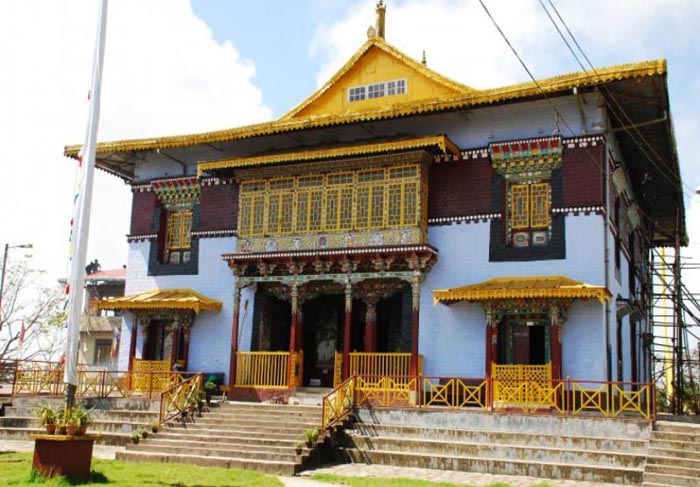Pemayangtse Monastery

Detail of Pemayangtse Monastery (Sikkim) History & Architecture
The Pemayangtse Monastery is one amongst the most famous Buddhist monasteries found in Sikkim. It is located just 140 km west from the capital city of Sikkim, Gangtok. It is stated to be one amongst the oldest monasteries of Sikkim as it was founded in the year 1705 by Lama Lhatsun Chempu. It is said that it was originally built as a small Lhakhang but today is standing tall with about three magnificent floors. This monastery follows the orders of the Nyingma Tibet Buddhism. Even today the monks from the Bhutias of Sikkim choose to reside and take care of the Pemayangtse Monastery.
There are two meanings of the word Pemayangtse, first being "monks of the pure Tibetan Lineage" and the other being "Perfect Sublime Lotus"- which indeed represents one of each plexus of the human body. You will be amazed to know that it is only the monks of Pemayangtse who are known to be the "ta-tshang", as a pious ritual is followed to sprinkle the holy water on these monks by the head lama of the monastery.
The Pemayangtse Monastery holds an important place in the Buddhist religious pilgrimage circuit which includes the Dubdi Monastery, Norbugang Chorten, Tashiding Monastery, the Sanga Choeling Monastery, the Rabdentse ruins and last but not the least the Khecheopalri Lake.
Pemayangtse Monastery Mythology & History
The mythology about the Pemayangtse is having a close relation with the era of the Kingship of Chodar Namgyal who was from the Rabdentse Chador. He was indeed a very religious person and this fact can be depicted from several of his religious initiatives which can still be found in Sikkim and one amongst which is the Pemayangtse Monastery. It is said that, during his reign every second of the son belonging to the Bhutia family was supposed to be a monk of the Pemayangtse Monastery. He also patronized religious dances to be a part of the religious places and thereby it is because of him that the martial and the native traditions of Sikkim have become a highlight today.
Pemayangtse Monastery Architecture
The Monastery is located at an elevation of about 2085 m which provides scenic beauty which is far beyond one's expression. The snow-capped mountains on the two sides of the Monastery will make you mesmerized for sure. Now coming to the architecture, the Pemayangtse Monastery has architecture which resembles the monasteries of China and Nepal. The Monastery is three storied and has about 1500 square feet of prayer halls, ancient Buddhist idols, colorful Tibet styled doors and windows, paintings which speak volumes, beautiful statues of the saints and Rinpoches which are located on the various floors of the monasteries add on to the reason for us to visit the monastery. The most famous statues found includes the Padmasambahva and the Dorje Bhurpa Vjarakila which has multiple heads and arms.
The monastery also has got a very beautiful and well maintained garden which includes the residential area for the monks as well.
One of the most attention seeking facts about the monastery includes that the whole of its structure took about 5 years to be completed. The architect of the monastery is non-other than the famous Dungzin Rimpoche. Thus from architectural point of view, it is truly a master piece as well as the intricate designing makes onlookers mesmerize.
Festivals at Pemayangtse Monastery
The most famous festival of the Pemayangtse Monastery is the Chaam Festival which is celebrated on the 28th and 29th day of the lunar month, as per the Tibetan calendar each year. In this festival both the lamas and the monks of the monastery participate and get dressed up in colorful costumes and perform dance. The 108 monks of the monastery can easily be recognized with their red hats. Pilgrims make it a point to visit this monastery and be a part of this extravagant festival. This festival is celebrated to depict the end of the Tibetan New Year and so is celebrated with great interest. Fireworks also contribute to the conclusion ceremony and add that extra charm to the festival.